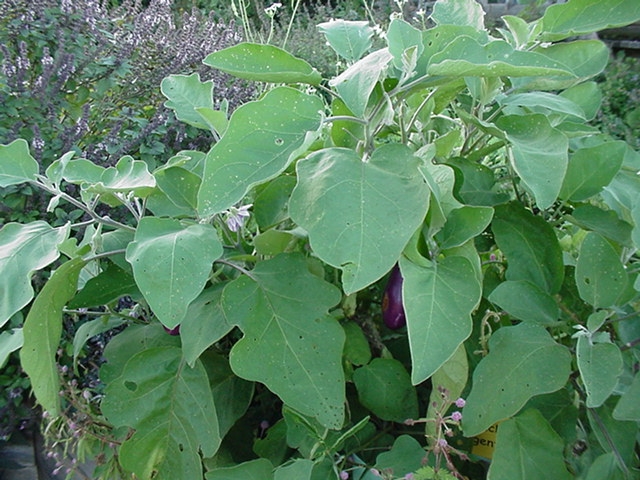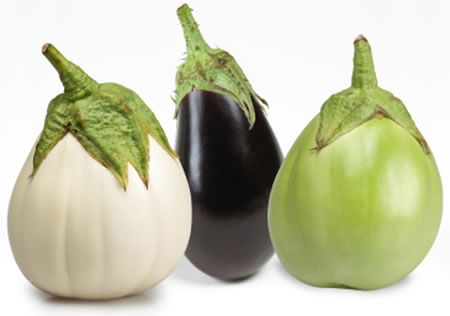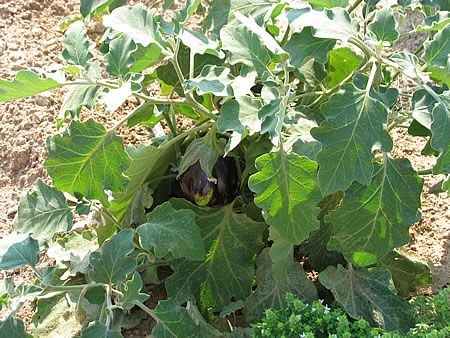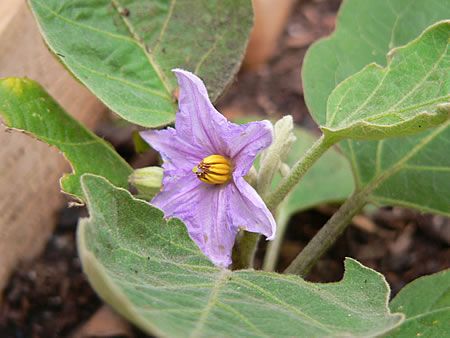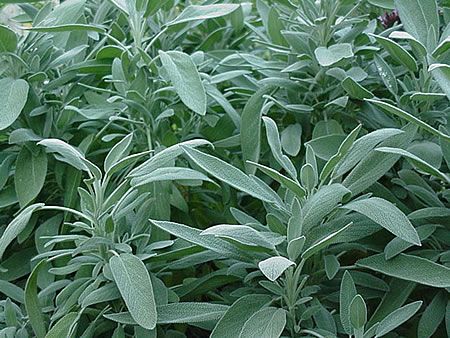Eggplants
Eggplant plant
Eggplant is a tropical plant. It loves heat.
Eggplant is one of my favorite vegetables. I can’t get enough of eating it fried, boiled or roasted. I love moussaka made with eggplant, fried eggplant and eggplant salad.
Dedicate a portion of your garden to grow your own eggplants. It’s not difficult and they will reward you with their taste and beauty.
Eggplants can also be grown in pots.
Eggplant Solanum Melongena Var. Esculentum, is a plant of the tropics and belongs to the Solanaceae family. It has been in Europe since the Moors entered Spain in the 16th century.
When to sow eggplants
You can sow eggplant seeds directly in the soil or in a nursery.
Sowing eggplant directly in the soil
You should sow eggplant seeds directly into the soil when the weather has warmed up sufficiently. This usually happens at the end of April. Do not attempt to sow eggplant seeds directly into the soil in March or early April.
The ideal temperature for eggplant seeds to germinate is 24-32 degrees Celsius.
You can continue sowing eggplant seeds up to June.
If you want to have a continuous production of eggplant, sow 15 days apart.
Sowing eggplant directly in the seedbed
You can sow eggplant seeds in the seedbed 6 to 8 weeks before the last frosts. In practice this means early to mid-March.
The seedbed should be in a place where the temperature is 21 degrees Celsius or more.
Starting eggplants from seed in a seedbed
You can start eggplants by sowing the seeds in the seedbed 6 to 8 weeks before the last cold spell. In practice this means early to mid-March.
The sowing depth is about 1 to 1.5 cm.
But you must ensure that the seed tray is in a warm place. The seedbed must be at least 18 to 21 degrees Celsius for the seeds to germinate.
Eggplant seeds do not germinate as quickly as tomato seeds.
You must be patient and not be disappointed.
When the seedlings reach a height of 10 cm, they are ready for transplanting.
For about 2 weeks before transplanting, you should harden them off. Get them out in the sun and air. Every day more and more. Start by leaving them in the sun for 2 hours.
Starting eggplants from seed directly in the soil
If you sow eggplant seeds directly into their final place in the soil, you should only do so once the weather has warmed up enough to be permanent. This usually happens in late April.
You should plant the eggplants in a part of the garden that gets a lot of sunlight. Eggplants are tropical plants and love sun and heat.
Prepare the place where you will sow the eggplant as described below. (Do the same when transplanting).
Dig a hole in the ground 30 cm in diameter and 20 cm deep.
Fill 1/3 of the pit with compost.
Add 1/3 of the soil you removed and mix with the compost layer.
Fill the remaining 1/3 with compost.
Use your finger to make three dimples 1 to 1.5 cm deep. Place 1 seed in each hole.
Cover the seed and lightly press down the soil.
Water the soil well. Water as needed so that the soil is moist but not wet.
It may be a month before you see the seedlings emerge from the soil.
Don’t be disappointed!
What kind of soil do eggplants need?
The ideal soil for growing eggplant is sandy, rich in organic matter and well-drained. The soil should have a pH between 5.5 and 8.0.
What fertilizer do eggplants need?
You can fertilize eggplants with the following ratio:
Nitrogen (N): 20 – 25 grams per square meter
Phosphorus (P): 20 – 25 grams per square meter
Potassium (K): 20 – 25 grams/square meter
Magnesium (Mg): 5 – 8 grams/square meter
You can apply 40% of the N, K and Magnesium dose with the basal fertilizer and the remaining 60% in 3 to 6 equal doses after the first harvest.
Overdosing on N can result in lush foliage but little production.
Phosphorus, you can put all of it in the basal fertilizer.
Eggplant is particularly sensitive to a lack of Magnesium and the trace minerals Zinc, Iron, Boron and Molybdenum. These trace elements can be obtained from agricultural stores in the form of a powder that dissolves in water, and fertilize the plants.
Eggplant sowing distances
Eggplant is sown in parallel rows. We have two distances. The row-to-row distance and the distance of the plants on the row.
The row-to-row distances are between 60 and 90 cm.
Eggplant flower
The distance between plants in the same row is between 45 and 60 cm. The denser the spacing, the more plants you can put in per unit area. But at the same time you need more fertilization and care.
Eggplant support
When the plant reaches 30 cm in height and after it has set fruit, you will need to support it.
You can put a rod in the ground and tie the plant to it.
Watering the eggplant
Eggplant is a plant that needs a lot of water. Water regularly so that the soil is moist but not wet. In the very hot summer months, when the plant has fruit, you should water it more.
Eggplants companion planting
Along with eggplants, you can sow the following plants:
- Basil (It is essential. Put basil between the eggplants)
- Beans
- Peas
- Spinach
- Thyme
Plants to avoid growing eggplant with
Eggplants are related to potatoes, tomatoes and peppers. You should avoid growing them with tomatoes, peppers and potatoes.
Greek eggplant varieties
In Greece you will find black, white and striped eggplants.
Of the Greek varieties, the following stand out:
Lagada: Elongated eggplants with a deep purple color.
Argos (Tsakoniki). Elongated eggplant with a purple color body and lighter color stripes. Are similar in shape to the Lagada variety.
Syros: Fat or round eggplants with a deep purple color.
White Santorini: Round eggplants with white color. They taste sweeter than other varieties.
Sources:
https://en.wikipedia.org/wiki/Eggplant
https://www.masterclass.com/articles/eggplant-companion-guide
Tags: CULTIVATE • CULTIVATION • EGGPLANT • EGGPLANTS • INSTRUCTIONS • TIPS

